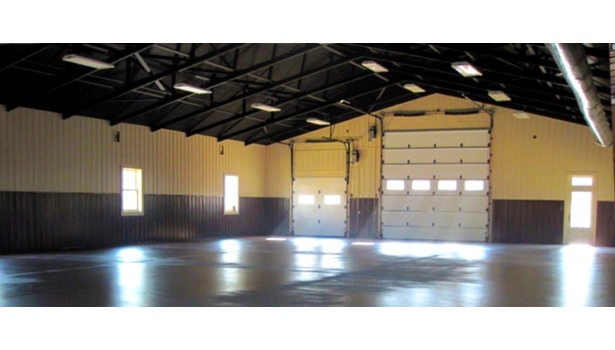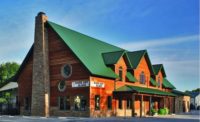There are many reasons to praise post-frame construction. However, when all is said and done, the “Bottom Line” factor gets the most attention in construction decisions today. Post-frame buildings, while offering all the benefits of conventional construction methods, usually cost less to build.
For the last two decades, post-frame designs have been specified more and more in the commercial, industrial, and residential sectors of the construction industry. Architects and designers are drawn to its design and materials flexibility while building owners have discovered the high value factor of this construction method. To a great extent, budget limits have a strong impact on design. Architects have realized that using post frame makes it easier to stay within the owner’s budget.
Fewer Materials and Reduced Construction Time
Post-frame construction can use significantly less wall and roof framing supplies, and minimal footing and foundation materials. Because this method spaces wood posts 8 to 12 feet apart, fewer resources are required in comparison to most other construction methods.
As the saying goes, “Time saved is money saved,” and that is quite true with post-frame construction. From site preparation to final walk-through, post-frame construction can be performed in far less time than other conventional methods. Time reduction begins with site preparation, as digging holes for the posts that form a structure’s frames requires less time than needed for a conventionally built frame. On average, it takes experienced post-frame contractors just two or three days to erect a basic frame and that includes time for posts, girts, trusses, and purlins. Skilled post-frame contractors report that delays due to cold weather, even in northerly climates, are minimal.
Lower Labor and Insurance Costs
Post-frame construction doesn’t require as many trade workers as conventional construction and that means a smaller payroll. Fewer building components also contribute to a reduction in labor expenses, as less time is needed for installation. In fact, many post-frame building components are prefabricated and arrive at the project site ready to be placed.
The cost to insure a building can vary greatly. For most structures, insurance carriers calculate liability rates on a statistical loss database for each building type. This calculation also takes into account specific geographic regional factors. A post-frame building’s insurance cost is usually comparable to the rates of insuring a steel-frame building. Due diligence would be to solicit bids from several brokers who offer policies from multiple insurance companies.
The Deciding Factor
Post-frame construction has proven to be versatile, durable, and sustainable. Those are admirable and desired characteristics, but it is the factor of cost effectiveness that sways owners to go with post frame.
Before signing on the bottom line of a construction contract, think about the “Bottom Line” factor that comes with post-frame construction.
To learn more about the many applications that post-frame construction can be applied to and can help reduce construction costs and save time, please visit www.PostFrameAdvantage.com.





Report Abusive Comment